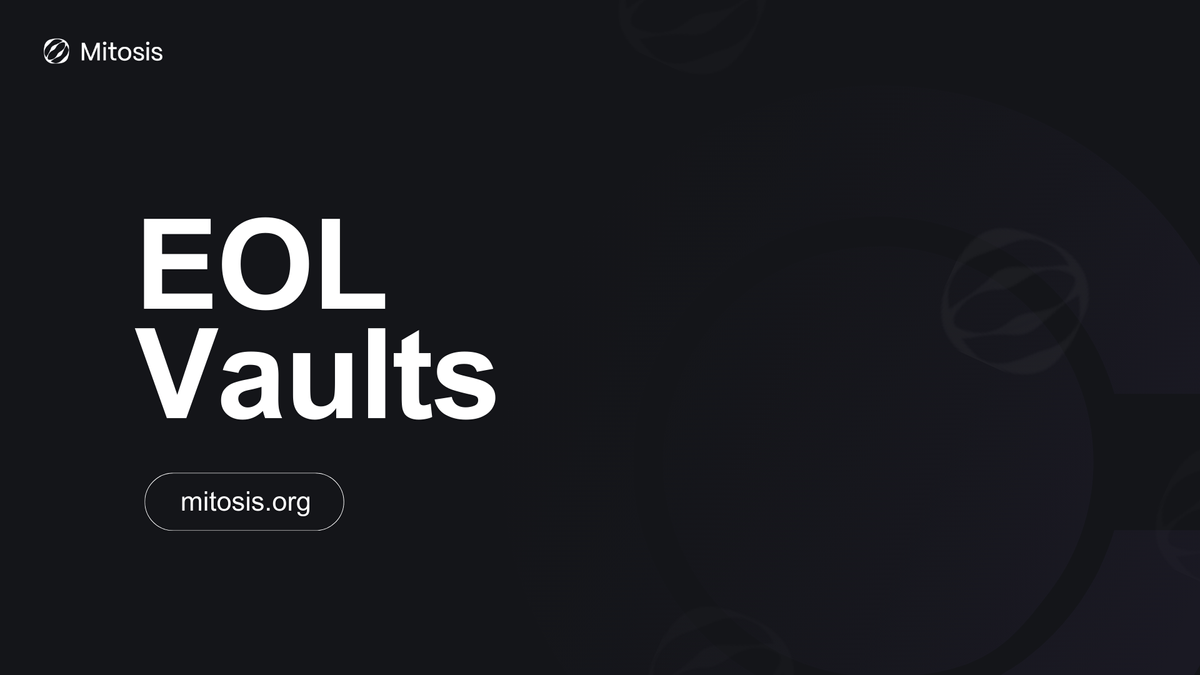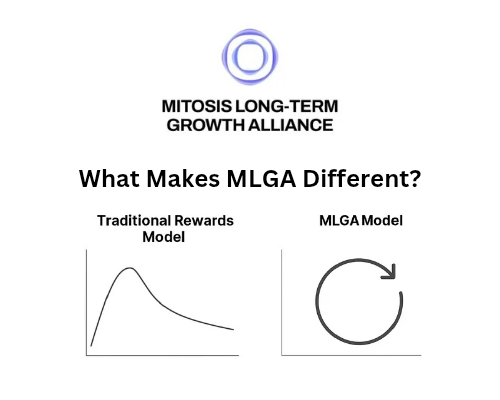EOL Vaults: A Simple Look at Mitosis’s Community Liquidity Tool

Mitosis is changing decentralized finance (DeFi) with its Ecosystem-Owned Liquidity (EOL) system, and EOL Vaults are the starting point. These vaults let you pool your crypto with others, earn rewards across multiple blockchains, and vote on how it’s used—all in a straightforward way. Let’s explore what EOL Vaults are, how they work, and why they matter, with every detail rooted in Mitosis’s setup.
What Are EOL Vaults?
EOL Vaults are where you deposit crypto—like ETH, weETH, or USDC—into Mitosis’s Layer 1 blockchain. When you add your assets, you get miAssets back, like miETH or miweETH, which show your share in the pool. These vaults aren’t just for holding money; they’re part of a community-run system that spreads liquidity across DeFi projects and chains.
The big idea? Instead of your crypto sitting in one spot, it joins a shared pool that the Mitosis community controls. You earn rewards from this pool, and your miAssets let you help decide where the liquidity goes. The Mitosis Docs call this “Ecosystem-Owned Liquidity,” where users shape the network together.
How Do EOL Vaults Work?
Here’s how it happens, straight from Mitosis’s design:
- Deposit Crypto: Add an asset to an EOL Vault; like weETH into the weETH vault on Ethereum or Arbitrum. You get miAssets (e.g., miweETH) at a 1:1 ratio, showing your share.
- Join the Pool: Your deposit mixes with everyone else’s in the EOL Vault, creating one big liquidity pot.
- Community Governance: The Mitosis community decides how vault assets are used like lending or staking through a governance system. Per the EOL Governance, anyone can propose ideas (e.g., “send weETH to Ether.fi”), and MITO token holders vote. Your miAssets don’t vote directly but tie you to this process as a liquidity provider.
- Earn and Settle Rewards: The vault earns profits like staking yield from weETH and these are tracked as pending rewards. The EOL Settlement docs say a “settler” (a trusted role) updates the vault’s reward data periodically. Once settled, your miAssets reflect the added value, and you claim rewards when you withdraw.
- Withdraw Anytime: Redeem your miAssets to get your original crypto back. Rewards might vary based on how long you stay in, per the Litepaper.
For example, depositing weETH into an EOL Vault gives you miweETH, which could be earned from staking or trading fees, depending on community votes. This cross-chain earning is Mitosis strength.
What Makes Them Tick?
EOL Vaults run on Mitosis’s tech, built for simplicity and scale:
- Smart Contracts: The rules are coded and checked, so everything’s clear and safe.
- Multi-Chain Support: Your assets can work on Ethereum, Optimism, or other chains Mitosis connects to, all in one system. This is a fix for DeFi’s scattered liquidity.
- Low Costs: Mitosis’s Layer 1 keeps fees small, so you keep more rewards.
The Mitosis Litepaper ties this tech to the EOL vision.
Who’s It For?
EOL Vaults fit a few types of people, based on Mitosis’s goals:
- Reward Seekers: Want steady gains? EOL Vaults spread your crypto across projects for reliable rewards, no chasing needed.
- Community Players: Like being involved? Your miAssets let you vote on the pool’s direction, giving you a voice.
- Project Supporters: Building a DeFi app? The community might vote to send EOL liquidity your way, helping you grow—though it’s up to their choice. (Litepaper, governance section.)
In 2024’s “Game of MITO,” over 290,000 users tested EOL Vaults, earning points (future MITO tokens) while learning, per Mitosis.org.
Why EOL Vaults Are Different
EOL Vaults stand out, according to Mitosis’s own words:
- Group Effort: You’re not alone, your crypto teams up with others for better results.
- Built to Last: Rewards grow over time, not just in a rush.
- Chain Flexibility: Your funds are earned across multiple blockchains without extra work.
Unlike a single pool on Uniswap, EOL Vaults share the load and the gains.
Risks to Know
There’s some risk—code could glitch, projects could flop, or prices could drop. Mitosis uses audits and openness to limit this, as noted in this Audit, but always check for yourself.
Why It’s Worth It
EOL Vaults turn your crypto into a team player—earning rewards, crossing chains, and letting you help decide what’s next, all through miAssets. If you want a low-stress, community-driven way to grow your funds, this is it.
You can keep in touch with MITOSIS by following:
WEBSITE || X (Formerly Twitter) || DISCORD|| DOCS

Comments ()